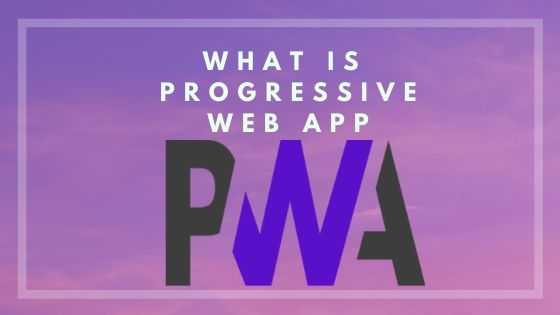Progressive Web Application (PWA) is an application software, that combines regular web pages and native mobile apps. It gives users a native-like experience by making a web application function like a desktop or mobile app.
The main characteristics of PWAs are:
- Reliable – load instantly and work offline or with a poor network connection
- Fast – seamless navigation, smooth animations, no janky scrolling.
- Engaging – feel and look like a native apps with a great user experience.
The history of PWA
The idea of web applications that look exactly and behave exactly like mobile apps, was introduced by Steve Jobs back in 2007 at the launch of the iPhone.
No SDK was required, and the apps would be fully integrated into the device through the Safari browser. But this model was later switched for the App Store.
In 2015, the term “Progressive Web Apps” was coined by Chrome developer Alex Russel and designer Frances Berriman to describe apps taking advantage of new features supported by modern browsers.
Since then, such major players like Google and Microsoft have been explicitly promoting the concept of Progressive Web Apps as a way of bridging the gap between web and native applications.
Advantages of PWA
- Less expensive in development and maintenance than native mobile apps – PWA works on all platforms with a single codebase. Companies, which chose to develop PWA over native applications, don’t need to maintain different teams of developers for different platforms (for example, iOS and Android).
- Ease of access – it’s a lot easier and faster to visit a website than install an application. To start using PWA for the first time, you just enter URL in a browser (or press a link) and that’s it! You don’t need to go to Store (App Store or Google Play), search for the app, accept various authorizations, install the app and finally use it. More so, when you visit PWA site, you’ll get notification to add app icon on the home screen, so next time you can just click the icon and open PWA (just like native apps).
- Discoverable – PWAs “live” on the web. So they can be optimized as per Search Engine Optimization criteria (SEO) and found through search engines. And also they can be shared by simply sending a link.
- Network independent – works offline or with a poor network connection. It is possible with the help of service workers (JavaScript file that can control the web-page/site and cache resources).
- Real-time update – PWAs get updated on their own. The end users don’t need to go to the app store, download update and wait till it is installed.
- Secure – PWAs are served over HTTPS protocol to prevent the connection from displaying information to any third parties.
- Responsive – they are usable on any device with a screen and a browser: desktop, mobile phone, tab, TV, etc.
- Re-engageable – PWAs present at the user’s home screen and send push notifications like native apps. The experience feels seamless and integrated.
Conclusion
There are many success stories of companies choosing the PWA route. Pinterest, Uber, Twitter Lite, Instagram, Forbes, AliExpress, Flipkart to name a few.
So, in the end, Progressive Web Applications allow you to spend your resources on developing one really great application instead of spreading your effort across two or three platforms. PWAs will not be suitable for all applications, so you can see for yourself if it works for your app.

